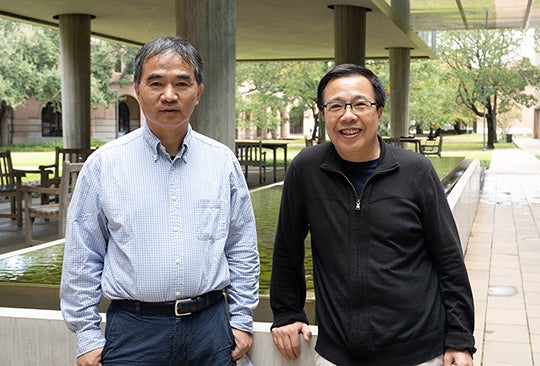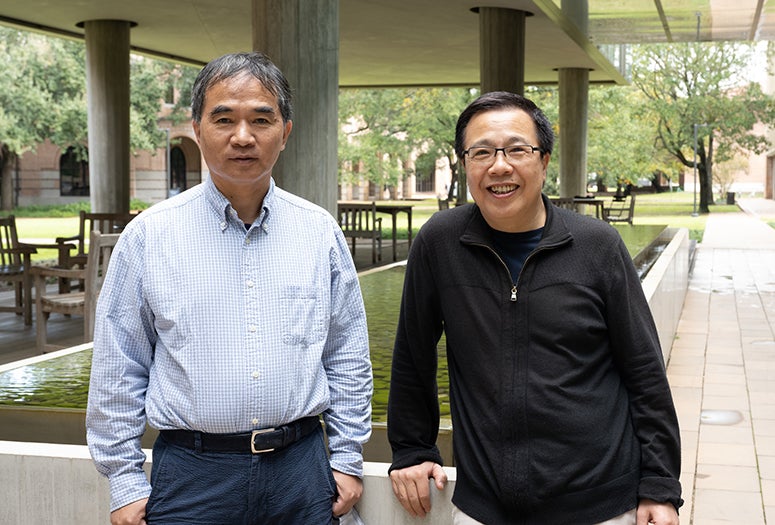By Miriam Arrell
Special to Rice News
Rice University physicists have collaborated with colleagues from the United States, Switzerland, Germany and China on the discovery of telltale evidence that electrons behave in a collective way that was previously unreported in an unconventional superconductor made of potassium, vanadium and antimony.

Published this week in Nature, the discovery of the correlated quantum phase aids understanding of unconventional superconductivity and other quantum phenomena that underpin research into quantum technologies for next-generation computing and electronics.
The research was led by Switzerland’s Paul Scherrer Institute and co-authored by Rice Quantum Initiative members Qimiao Si and Pengcheng Dai and collaborators from Princeton University, the University of Zurich, the Chinese Academy of Sciences, Renmin University of China, Oak Ridge National Laboratory, and Germany’s University of Würzburg and Max Planck Institute for Solid State Research.
The research provides evidence for the breaking of time-reversal symmetry in a quantum phase called a charge density wave. Time-reversal symmetry means the laws of physics are the same whether a system is going forward or backward in time.
“Charge density waves have been known for a very long time, but one that spontaneously breaks time-reversal symmetry is rare,” said Si, the Harry C. and Olga K. Wiess Professor in Rice’s Department of Physics and Astronomy and director of Rice’s Center for Quantum Materials. “Our work provides compelling evidence for such an unusual correlated quantum phase of matter.”
Using ultra-sensitive muon spin spectroscopy, a team led by Zurab Guguchia at the Paul Scherrer Institute discovered weak internal magnetic fields that break time-reversal symmetry in the material known as KV3Sb5.
The discovery sheds light on the underlying mechanism of both superconductive and topological states that have previously been observed in the material. It also opens new avenues of research in unconventional superconductivity and quantum information technology, an area that exploits novel degrees of freedom of quantum particles as an information carrier in solid-state devices.
–Miriam Arrel is a science writer at the Paul Scherrer Institute in Villigen, Switzerland.

